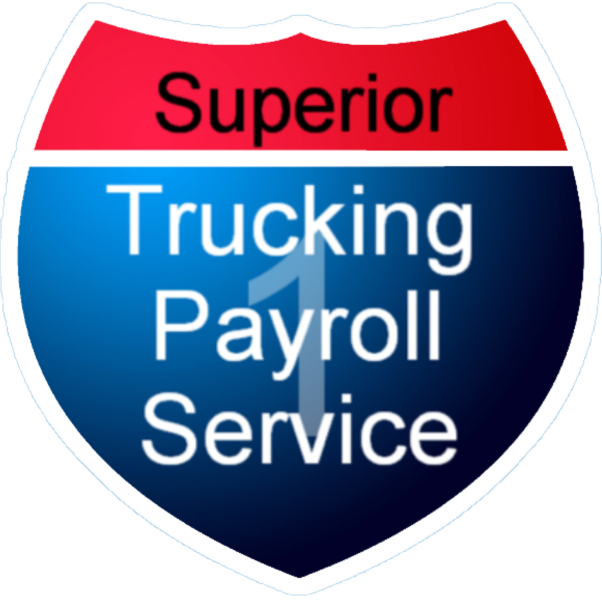*** Updated 1/30/2025 ***
How do you decide the best way to pay your truck drivers? Is paying per mile a fair and effective method for both drivers and employers?
In this article, we promise to answer these questions and give you a clear understanding of how per-mile pay works, including its advantages, disadvantages, and what to look out for when using this payment model.
By the end, you’ll have the knowledge you need to determine if per-mile pay is the right choice for your company and how to implement it successfully.

How Does Per-Mile Pay Work?
Per-mile pay compensates drivers based on the number of miles they drive. The formula is simple: Miles driven × Cents per mile (CPM) = Total pay.
For example, a driver earning $0.50 CPM who drives 2,500 miles in a week will earn $1,250 before taxes. However, it’s not always this straightforward because companies calculate mileage differently.
Common mileage types include:
- Practical Miles: Routes that are the most realistic and efficient for drivers.
- Hub Miles: Based on the truck’s odometer readings.
- Shortest Route Miles: The absolute shortest path, which often doesn’t reflect real-world driving (not recommended).
Choosing the right mileage type ensures fairness and avoids underpaying your drivers.
Updated Average CPM Rates in the Trucking Industry
CPM rates have increased over time, reflecting the rising demand for skilled drivers and inflation. Today’s industry averages range from $0.45 to $0.85 per mile, depending on factors like:
- Driver Experience: New drivers typically start at the lower end of the scale, around $0.45-$0.50 CPM.
- Freight Type: Specialized loads, such as hazardous materials or oversized freight, command higher rates.
- Team Drivers: Team drivers who share driving shifts cover more miles. While their CPM may be slightly lower, their ability to cover more ground often results in higher total earnings.
For solo drivers, covering 2,000 to 3,000 miles each week can result in earnings between $900 and $2,550 per week. Experienced drivers hauling specialized loads can earn even more.
What to Consider When Paying Per Mile
Paying drivers per mile has its advantages, but there are several important factors to consider:
- Miles Assigned: A high CPM rate isn’t helpful if drivers aren’t getting enough miles. For example, a driver earning $0.85 CPM but only driving 1,000 miles a week would make less than a driver earning $0.50 CPM and driving 2,500 miles.
- Incentives and Bonuses: Many companies offer bonuses for exceeding mileage goals, driving safely, or saving on fuel. These incentives not only reward hard work but also keep drivers motivated and engaged.
- Delays Impacting Mileage: Drivers face challenges like traffic, bad weather, or long loading times, which reduce their ability to log miles. Transparent communication and fair compensation for unavoidable delays help maintain trust.
While these factors are important to keep in mind, per-mile pay offers several benefits that make it an attractive option for both trucking companies and drivers.
Advantages of Per-Mile Pay
Per-mile pay isn’t just a straightforward way to compensate drivers—it also offers several unique advantages that benefit both drivers and trucking companies.

- Predictable Pay for Drivers: Drivers know how much they’ll earn based on their mileage. This makes pay straightforward and easy to calculate for both employers and employees.
- Encourages Efficiency: The more miles a driver covers, the more they earn. This encourages drivers to stay productive and helps companies meet delivery deadlines.
- Bonuses and Incentives: With bonuses for top mileage or safe driving, per-mile pay can reward drivers who go the extra mile—literally.
- Easier Payroll Management: For companies, calculating pay based on miles simplifies payroll and reduces administrative complexity.
But keep in mind that, as with any payment model, there are some potential downsides to consider when using per-mile pay.
Disadvantages of Per-Mile Pay
While paying drivers per mile has its benefits, there are some challenges that can impact both driver satisfaction and overall efficiency.
- Traffic and Weather Delays: Unpredictable events like traffic congestion or snowstorms can significantly cut into a driver’s earning potential.
- Short Hauls: City driving or short routes often result in fewer miles, which means less pay compared to longer trips. And city driving can be very complicated and intense.
- Potential for Unfair Pay: If companies calculate mileage using methods that underestimate the actual distance driven, drivers may feel underpaid and undervalued. In some cases, this has led to legal trouble.
Despite these drawbacks, there are ways to address these challenges and ensure per-mile pay works effectively for your drivers and your company.
How to Maximize Efficiency with Per-Mile Pay
Maximizing the benefits of per-mile pay requires thoughtful planning and clear communication to ensure both drivers and companies get the most out of this payment model.
- Offer Competitive Rates: Stay above industry averages to attract and retain top talent.
- Reward Performance: Use bonuses for safe driving, fuel efficiency, or consistent mileage to keep drivers motivated.
- Minimize Delays: Provide tools like GPS apps and real-time traffic updates to help drivers avoid time-wasting obstacles.
- Use Transparent Mileage Calculations: Be upfront about how mileage is measured to avoid misunderstandings or disputes.
While per-mile pay can be highly effective when optimized, it’s also worth exploring alternative payment models to see what works best for your business and your drivers.
Alternatives to Per-Mile Pay
While CPM is the most popular model, other payment options may suit different needs:
- Hourly Pay: Works well for city drivers or short-haul routes where mileage is limited. These routes often require more effort, like navigating traffic and making frequent stops, making hourly pay a fairer option.
- Salary Pay: Provides stable income regardless of miles driven, which can be attractive for certain roles such as short-haul routes, switchers, or yard work. These positions often involve consistent schedules and predictable workloads, making salary pay a practical choice.
- Percentage of Load: This method is commonly used for paying owner-operators, who are typically subcontractors paid via 1099. Drivers earn a portion of the revenue generated by each haul, which can be highly lucrative for specialized or high-value freight.
Each method has its pros and cons, so it’s essential to choose the one that aligns best with your business goals and driver satisfaction.

Conclusion
Per-mile pay is one of the most common ways to compensate truck drivers because it’s simple, transparent, and rewards productivity. When implemented thoughtfully, it can benefit both drivers and employers.
If you’ve been struggling to decide on a fair and effective pay structure for your drivers, it’s important to weigh the advantages and disadvantages of per-mile pay. Challenges like traffic delays or inconsistent mileage can be addressed with clear policies, competitive rates, and effective planning.
Now that you understand how per-mile pay works, take the next step by reviewing how mileage should be calculated. This can ensure you’re setting up a payment system that’s fair, efficient, and rewarding for your team.
At Superior Trucking Payroll Services, we specialize in helping companies like yours manage payroll effectively, including per-mile pay models. Reach out to us for personalized guidance to ensure your payroll system works smoothly for both you and your drivers.
Written by Melisa Bush
With over 15 years of experience in the trucking industry, Melisa is well-versed in the complexities of trucking payroll and adept at navigating special circumstances. Before joining Superior Trucking Payroll Service, Melisa worked at a trucking company, where she managed driver miles and expenses for a fleet of 50 trucks. This hands-on experience gives her unique insight into the challenges our clients face when preparing their payroll data.
Melisa’s top priority is customer service. She strives to treat each client as an individual with genuine needs, rather than just another number in the system. Her goal is to alleviate the burdens of our clients and make their daily operations smoother.

